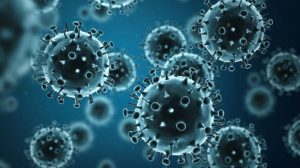The ultimate goal in tissue engineering is to produce scaffolds that are similar in structure and function to healthy tissue in all respects. In the human body, various stimuli play a role in the development and maintenance of this structure and function. Proper use of them helps a lot to improve the engineered tissues. Various methods have been proposed for the production of scaffolds from natural and synthetic polymers. Electrospinning is a method used in various medical applications such as dressing for wound healing and drug release. Electrospinning is a suitable method for the production of scaffold nanofibers due to the production of nanofiber layers with a structure similar to the extracellular matrix (ECM).
Polycaprolactone (PCL) is a non-toxic and fully biodegradable polymer, approved by the US food and drug administration (FDA), which has been considered by researchers as one of the suitable options for scaffolds construction with the potential ability for drug delivery. On the other hand, gelatin is a biopolymer and has various properties including high biocompatibility, biodegradability, no formation of antigens, high absorption capability in vivo, and cost-effective compared to synthetic polymers, accelerated adhesion, cell migration, and the formation of polyelectrolyte complex ability.
PCL/Gel electrospun nanofibrous is also a suitable candidate for drug delivery systems. Recently, Al-Baadani et al. reported the application of co-electrospinning PCL/Gel membrane as a tunable drug delivery system for bone tissue regeneration. The system can slowly release both hydrophobic and hydrophilic drugs by inhibiting the diffusion/dissolution of gel fibers.
As a natural biomaterial in bone, the application of Calcium phosphates (CPs) has been scrutinized in bone regeneration and musculoskeletal fields due to osteoconductivity and osteoinduction (in some cases), resorbability, and amenability features. In addition, CPs also served as a precursor for the preparation of other biomaterials. In bone tissue engineering, DCP not only enhances the mechanical feature of the final scaffold but also phosphorous and Ca2 facilitate bone regeneration by activating osteoclasts and osteoblasts. DCP can also be reinforced with various polymers such as poly (propylene fumarate) (PPF) and used for bone tissue engineering.
Graphene oxide nanoparticles (GO NPs) have also received much attention in tissue engineering due to their excellent mechanical and thermal resistance. In addition, graphene nanosheets have a significant antibacterial activity that is highly dependent on their structure and morphology, which results from surface modification. Therefore, by modifying the surface of graphene nanosheets with suitable biomolecules and its use in engineering scaffolding, antibacterial scaffolds with remarkable mechanical and thermal properties can be made.
In this study, the mixture of nanofibrous scaffolds was electrospun from polycaprolactone /gelatin (Gel/PCL) blend solutions reinforced by dicalcium phosphate dihydrate (DCPD)-modified graphene oxide (GO). DCPD was immobilized on the poly (α-amino acid)-modified graphene oxide via ionic interactions, then incorporated into the PCL framework. Clindamycin an antibiotic drug was also added to the scaffold nanofiber. The homogenous nanofibers were prepared with 250 nm average diameter co-electrospun of Gel/ PCL blend solutions. The slow and controlled release was observed for DCPD as well as clindamycin from the nanofiber.
Tensile strength test and contact angle measurements demonstrated that the addition of PCL and GO led to higher mechanical and physical properties of the resulting scaffolds. The loading of DCPD-modified graphene in the Gel/PCL structure caused the formation of the nanofibrous substrate with suitable physical properties and biocompatibility. Gel/PCL-G hybrid nanofibers demonstrated good biocompatibility toward human osteosarcoma cells and showed no cellular toxicity. The cells grown on the scaffolds showed a homogenous morphology and almost consistently covered the entire fiber. The fabricated nanofibers due to smooth and nanofibrous morphology, good cellular behavior, and higher hydrophilicity could be a good candidate for use in bone tissue engineering. Besides, significant antibacterial activity was found in the nanofibers against S. aureus than E. Coli.
Details of the research can be viewed here:
https://www.sciencedirect.com/science/article/abs/pii/S1387700322001447
Hendrik Setia Budi, Walid Kamal Abdelbasset, Mohammad Javed Ansari, Saade Abdalkareem Jasim, Milad Kazemnejadi. Preparation of antibacterial Gel/PCL nanofibers reinforced by dicalcium phosphate-modified graphene oxide with control release of clindamycin for possible application in bone tissue engineering. Inorganic Chemistry Communications. Volume 139, May 2022, 109336. https://doi.org/10.1016/j.inoche.2022.109336









